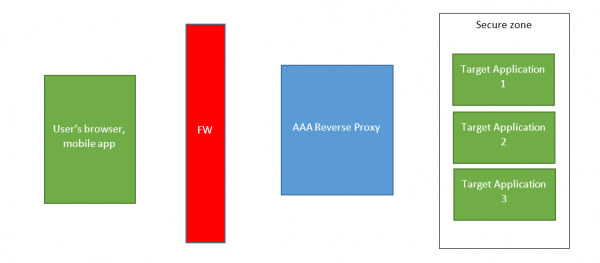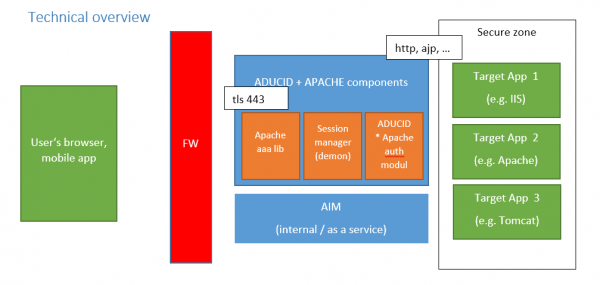User Tools
Sidebar
nocode:overview
Table of Contents
No-Code integration overview
- User opens a web application
- Apache resolves it with code 401 - unauthenticated
- ADUCID Binder page is diplayed - it is ADUCID authentication page with login button and QR code
- As soon as user authenticates page is reloaded and proxypass used to retrieve the back-end application for user
- Or Apache has to handle 403 Unauthorized - see Authorization in No-Code
In Apache configuration just require authentication:
require valid user
REMOTE_USER or any other attribute
User ID is sent to application in header attribute - REMOTE_USER In ADUCID AIM it is called UDI As we use Apache you can rename it to anything else - some applications use x-forwarded-user or other user ID
Example how to send X-forwarded-user instead of REMOTE_USER:
RewriteEngine On
RewriteCond %{LA-U:REMOTE_USER} (.+)
RewriteRule .* - [E=RU:%1]
RequestHeader set X-Forwarded-User %{RU}e
Security remarks
- Apache has to be accessible only via TLS (https).
- Back-end application has to be separated and accessible only from Apache (http, ajp, …)
- Apache installed for ADUCID shouldn't be used for applications. User another instance of Apache instead.
- Headers from client are not transported to the back-end as ProxyPass is used (unless you configure Apache to do it)
- So if users sents REMOTE_USER to Apache, it is wiped out and target application won't see it
Technical overview
Other topics
nocode/overview.txt · Last modified: 2020/02/29 11:07 by mpospisek


